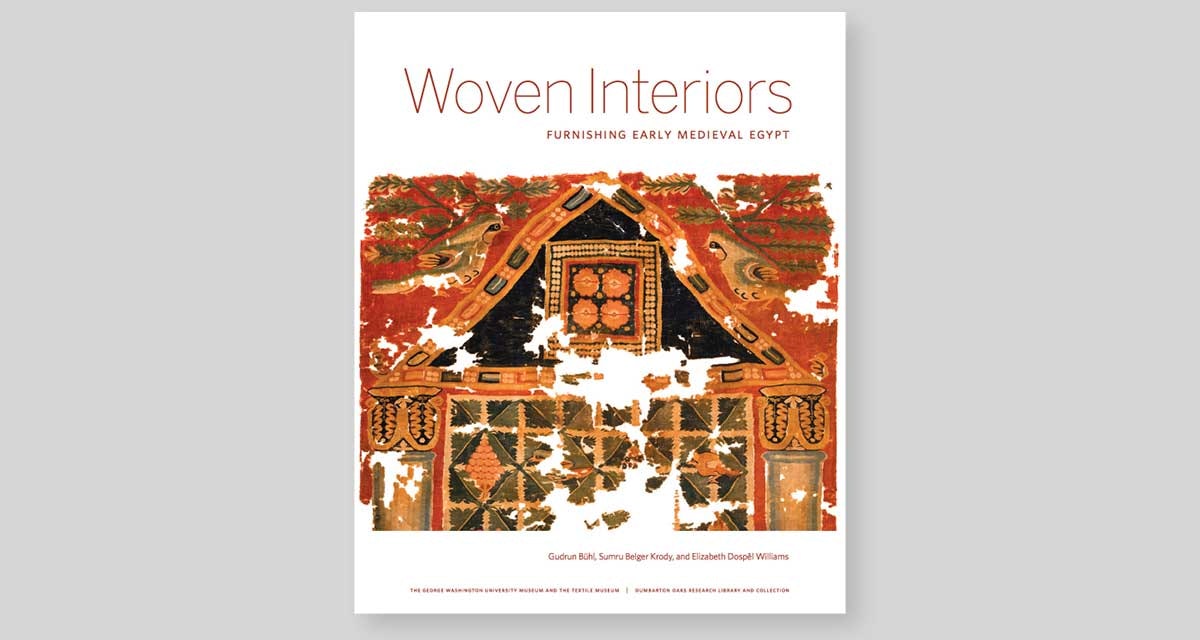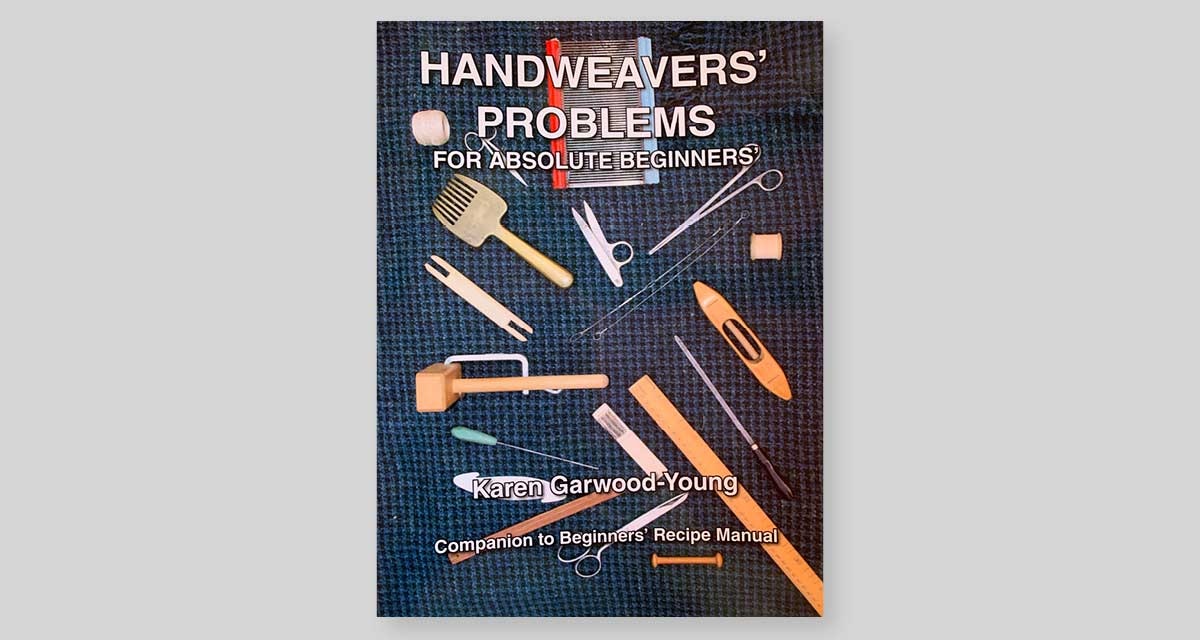Sometimes all it takes is a good weaving book to take you away. These two Media Picks from Handwoven September/October 2020 are very different in scope. The first one is available free on-line. It wasn't a subject I was very familiar with and to be honest I wasn't sure I was interested in it until I started reading and looking at the photographs. - Susan
WOVEN INTERIORS
FURNISHING EARLY MEDIEVAL EGYPT
Gudrun Bühl, Sumru Belger Krody, and Elizabeth Dospêl Williams

Often after I leave an art exhibit, I look forward to buying the catalog. Looking at the pictures can transport me back to how I felt viewing the actual works of art. In addition, if museum fatigue prevented me from reading everything, I can peruse the catalog at my leisure. And, of course, for those times that you can’t see an exhibit in person, a catalog is the next best thing.
This catalog produced in conjunction with the Woven Interiors exhibition is lovely to browse and interesting to read. If you appreciate beautiful pictures of fabrics—especially historical ones—and detail photographs showing individual threads, you will love this catalog. The textile fragments that make up the bulk of the exhibit are displayed with extensive captions regarding the related textiles’ functions, design, and composition. The pictures alone are wonderful, but they also enticed me to read the essays included in the catalog that address different aspects of the collection and the role that textiles played in medieval Egypt, a subject I found fascinating.
In those six essays, the three authors offer unique perspectives, sometimes overlapping, about the textile objects in the exhibit. Over time, most textiles disintegrate, and we are left with only architectural hard surfaces and must piece together how those spaces were used. In the case of medieval Egypt, textile-friendly dry weather conditions and the propensity of people to be buried with their favorite textile objects have left researchers more to work with. In addition, paintings and mosaics from the period offer clues about how textiles changed living spaces. For example, in the opening essay, Gudrun Bühl explains how hanging textiles of the era defined interior spaces serving as moveable doors and walls.
Other essays in the catalog discuss the many roles that textiles played in early medieval Egyptian life in the home, at the dining table, and in sacred spaces. The authors show how, just as in modern life, textiles conferred status and comfort. They were used to record and honor religious events and persons in tapestries, and they were also the most quotidian of fabrics used within a household—the rugs on the floor, the curtains at the window, the towels in the kitchen. There are also descriptions of the sharing of designs across cultures and mediums, and the weaving techniques used for different effects.
If you want to immerse yourself in pretty images, there are plenty here. I urge you to read this catalog and reflect on how textiles may have been used in early medieval interiors and how that relates to the ways we use textiles today.
You can find this beautiful catalog here.
—Susan E. Horton
Washington, DC: George Washington University Museum and The Textile Museum, 2019, digital or hard copy, 134 pages, ISBN 978-0-87405-040-0.
HANDWEAVERS’ PROBLEMS FOR ABSOLUTE BEGINNERS
Karen Garwood-Young

As you advance in weaving, there are a lot of phrases and facts you start to take for granted as common knowledge. We, as experienced weavers, know almost instinctively how to “use tabby” or “tromp as writ” and employ the terms without a second thought. The beginner, on the other hand, often has no idea what these phrases mean, and, speaking from experience, it’s not always easy to find out. For all those beginning weavers who don’t yet know what they don’t know, but want to be prepared, there is Handweavers’ Problems for Absolute Beginners.
Karen Garwood-Young’s book is not a “teach yourself to weave” type of book. Rather, it’s a compendium of basic weaving information, such as how to approach planning cloth—including yarn calculations—as well as information on different methods of warping, name drafting, and getting your tension right. I wouldn’t suggest this book as the only one needed by a beginning weaver but read in tandem with a how-to-weave book or while taking an introductory class, it’s a valuable resource.
There are a few caveats. First, Garwood-Young is British and therefore not all the weaving terms used are familiar to American weavers. For example, the author uses the term “laying the warp” instead of winding the warp. Even so, most of the terms are the same, and for those that aren’t, the photos, illustrations, and instructions make it easy to figure out what the author is referring to. It’s also important to know that the book is self-published, and so there’s no index for quick reference and the layout isn’t quite as “slick” as in other introductory weaving books. Still, the information found within the book is so useful I had no problem overlooking these issues, and I think many weavers will feel the same.
—Christina Garton
Canterbury, Kent: Garwood-Young Studio, 2019, spiralbound, 64 pages. Available here.

